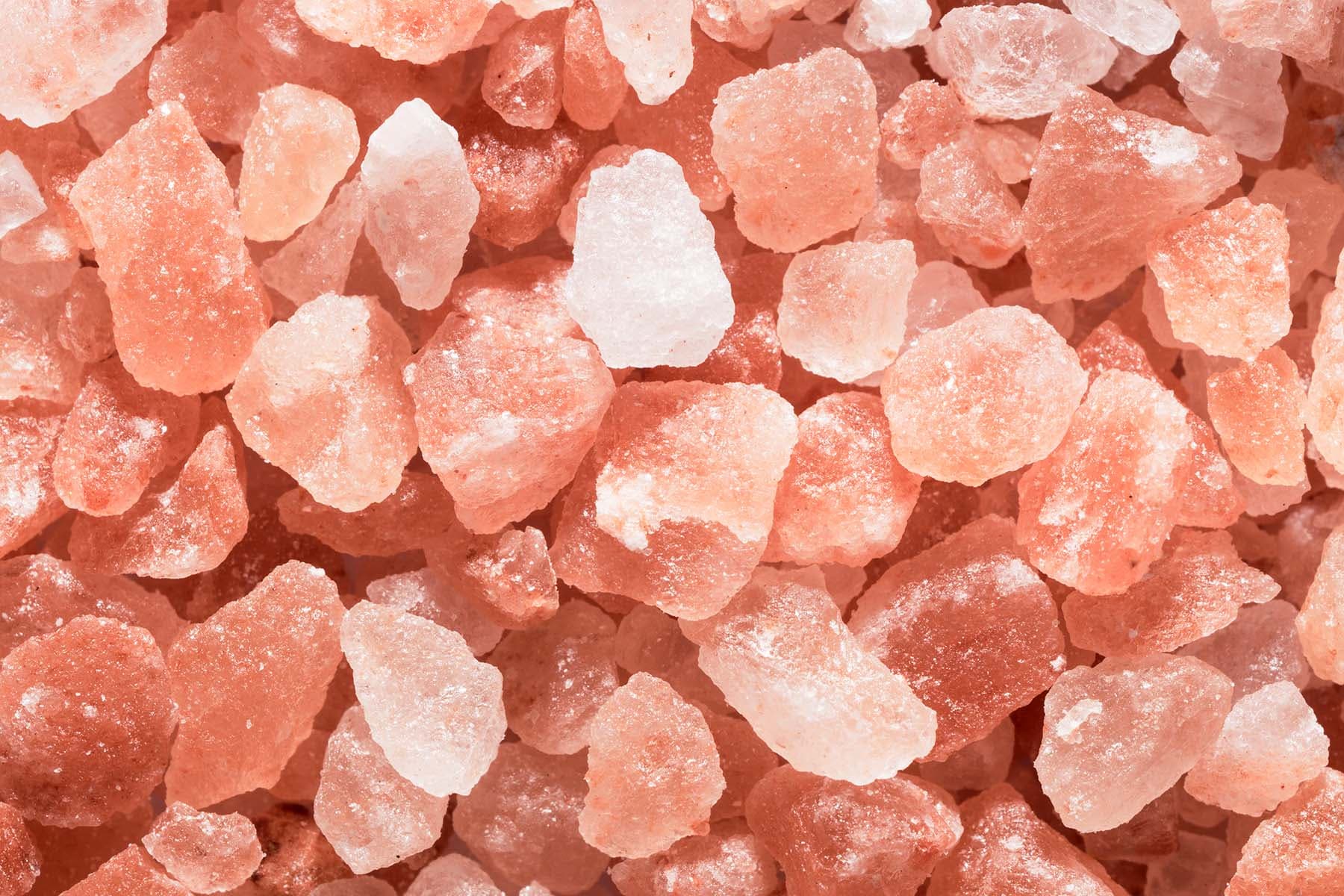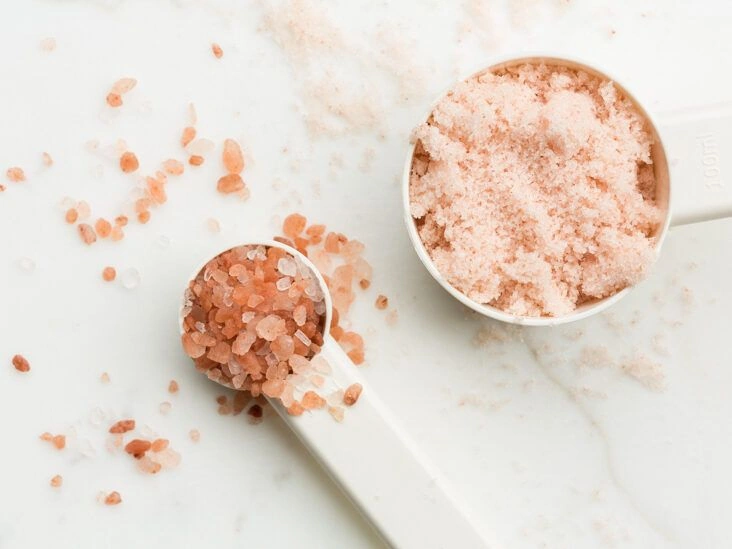Pink Himalayan salt is less refined than common table salt and may harbor trace minerals and nutrients. It could offer some health perks.
Pink Himalayan salt is a naturally pink-hued salt mined near the Himalayan region in Pakistan.
Many people claim it’s rich in minerals and provides substantial health advantages.
Because of these assertions, pink Himalayan salt is often perceived as a far healthier option compared with ordinary table salt.
However, scientific research on pink Himalayan salt is limited, and many experts argue that these bold health claims are largely speculative.
This article examines the primary differences between pink Himalayan salt and regular table salt and assesses the evidence to determine which salt might be healthier.

What Is Salt?
Salt is a mineral composed predominantly of the compound sodium chloride.
Salt contains so much sodium chloride — roughly 98% by weight — that many people use the terms “salt” and “sodium” interchangeably.
Salt is produced either by evaporating seawater or by mining solid deposits from underground salt mines.
Before it reaches store shelves, table salt is typically refined to remove impurities and most other minerals besides sodium chloride.
Anticaking agents are often added to prevent clumping, and iodine is commonly included to help prevent iodine deficiency in populations.
Humans have used salt to season and preserve food for millennia.
Interestingly, sodium also plays a crucial role in several physiological processes, including fluid balance, nerve signaling and muscle contraction.
For this reason, dietary salt, or sodium, is essential.
However, many health authorities warn that excessive sodium intake can contribute to high blood pressure and cardiovascular disease, though recent studies have questioned this long-standing view.
Because of worries about consuming too much regular salt, many people have switched to pink Himalayan salt, believing it to be a healthier substitute.
Summary:Salt is mostly sodium chloride and supports vital bodily functions. Concerns about excessive salt consumption have led many to try pink Himalayan salt instead.
What Is Pink Himalayan Salt?
Pink Himalayan salt is a pink-tinted salt extracted from the Khewra Salt Mine near the Himalayas in Pakistan.
The Khewra Salt Mine is among the oldest and largest salt mines on earth.
The pink salt from this mine is thought to have formed millions of years ago from the evaporation of prehistoric bodies of water.
The salt is hand-mined and minimally refined, yielding an unprocessed product without additives and commonly perceived as more natural than table salt.
Like table salt, pink Himalayan salt is predominantly sodium chloride.
However, its traditional extraction and minimal processing allow it to retain additional minerals and trace elements that are not present in refined table salt.
Some estimates claim it may include as many as 84 different minerals and trace elements. Indeed, these minerals — notably iron — are responsible for its distinctive pink tone.
Summary:Pink Himalayan salt is hand-extracted from the Khewra Salt Mine in Pakistan. It’s minimally processed and marketed as a natural alternative to conventional table salt.
How Is Pink Himalayan Salt Used?
Pink Himalayan salt has a range of culinary and non-culinary applications.
You Can Eat It or Cook With It
In practice, you can use pink Himalayan salt for cooking the same way you use regular table salt. Add it to sauces and marinades or sprinkle it on food at the table.
Some people even use substantial blocks of pink Himalayan salt as cooking surfaces. Large salt slabs can be purchased for grilling, searing and imparting a salty flavor to meats and other dishes.
Pink Himalayan salt is available finely ground like table salt, but coarse crystal varieties are also commonly sold.
Considerations for Cooking
When measuring any salt by volume, it’s important to account for how finely it is ground.
You may need to use a larger quantity of coarse salt to match the intensity of finely ground salt. Finely ground salt packs more densely, yielding more salt by volume.
For instance, 1 teaspoon of finely ground salt may contain about 2,300 mg of sodium, while 1 teaspoon of coarse salt varies by crystal size and could contain under 2,000 mg of sodium.
Additionally, pink Himalayan salt generally has slightly less sodium chloride than standard table salt, which you might consider when seasoning.
Current U.S. dietary guidelines advise most adults to limit sodium to no more than 2,300 mg per day — roughly equal to 1 teaspoon (6 grams) of finely ground salt.
However, when using pink Himalayan salt, check the nutrition facts on the package because sodium content can differ considerably between brands.
Non-Dietary Uses
Beyond culinary uses, pink Himalayan salt is used in several popular non-dietary products and practices.
It is incorporated into some bath salts, which are marketed to improve skin conditions and soothe aching muscles.
Salt lamps are also frequently carved from pink Himalayan salt and claimed to purify air. These lamps are large salt blocks with a light inside that heats the salt.
Spending time in artificial salt caves constructed with pink Himalayan salt is another trend for people hoping to relieve skin and respiratory issues.
However, evidence supporting these non-culinary uses is fairly weak. More rigorous studies are required to confirm these purported benefits.
Summary:Pink Himalayan salt can be used in cooking much like regular salt. Bath salts, salt lamps and salt caves are common non-dietary applications, though evidence for their benefits is limited.
Pink Himalayan Salt Contains More Minerals
Both regular table salt and pink Himalayan salt are mainly sodium chloride, but pink Himalayan salt contains up to 84 additional minerals and trace elements.
These include common minerals such as potassium and calcium, along with less familiar elements like strontium and molybdenum.
One study analyzed mineral profiles across several types of salts, including pink Himalayan and common table salt.
Below is a comparison of well-known minerals present in one gram of each salt:
1.60.42.80.91.060.01390.03690.0101368381
As observed, table salt may contain more sodium, whereas pink Himalayan salt supplies greater amounts of calcium, potassium, magnesium and iron.
Nonetheless, the concentrations of these minerals in pink Himalayan salt are extremely small.
They are so minimal that you would need to consume 3.7 pounds (1.7 kg) of pink Himalayan salt to meet the daily recommended potassium intake, for example — an impractical and unsafe amount of salt to eat.
Overall, the trace minerals in pink Himalayan salt are present at levels too low to offer meaningful health benefits.
Summary:Pink Himalayan salt includes several minerals not found in refined table salt, but those minerals are present in such tiny amounts that they are unlikely to confer any notable health advantages.
Are the Health Claims True?
Despite containing only minute amounts of additional minerals, pink Himalayan salt is often promoted as having many health benefits.
The reality is that most of these assertions lack solid scientific backing.
Some commonly circulated health claims for pink Himalayan salt include that it can:
- Improve respiratory conditions
- Balance the body’s pH
- Reduce signs of aging
- Enhance sleep quality
- Regulate blood sugar
- Boost libido
A few claims related to non-dietary uses may have some tenuous research supporting them.
The therapeutic use of salt caves for certain lung conditions has been explored in some studies. Results hint at possible benefits, but overall more rigorous research is necessary to confirm efficacy.
Conversely, several claims simply reflect normal roles of sodium chloride in the body and would apply to any salt.
For instance, studies have shown that very low-sodium diets may be linked to sleep disturbances.
This suggests adequate sodium intake may support sleep quality, but such findings concern sodium in any salt and are not specific to pink Himalayan salt.
Moreover, the mineral content of pink Himalayan salt is far too low to influence systemic pH. The lungs and kidneys tightly control pH balance without assistance from dietary pink salt.
Likewise, blood glucose regulation, aging and sexual drive are governed primarily by other physiological and lifestyle factors; there is no evidence that consuming pink Himalayan salt improves these aspects of health.
There are also no direct studies comparing health outcomes between pink Himalayan salt and table salt. Were such studies conducted, it is unlikely they would reveal meaningful differences.
Summary:Many health claims are associated with pink Himalayan salt, but most lack scientific support.
The Bottom Line
With all the exaggerated health claims, it’s understandable why people may be uncertain about which salt to choose.
However, no studies have directly compared the health impacts of pink Himalayan salt versus regular table salt. If such research were available, it’s improbable it would find major differences.
If you want to avoid additives found in regular table salt, pink Himalayan salt is a reasonable natural option. Just don’t expect the dramatic health improvements sometimes touted online.
Also note that table salt is a primary dietary source of iodine, so if you switch to pink Himalayan salt, be sure to obtain iodine from other foods like seaweed, dairy and fish to prevent deficiency.
Lastly, pink Himalayan salt is often priced well above regular table salt. If you’re unconcerned about additives, conventional iodized table salt remains a perfectly acceptable and inexpensive choice.


















Leave a Reply
You must be logged in to post a comment.